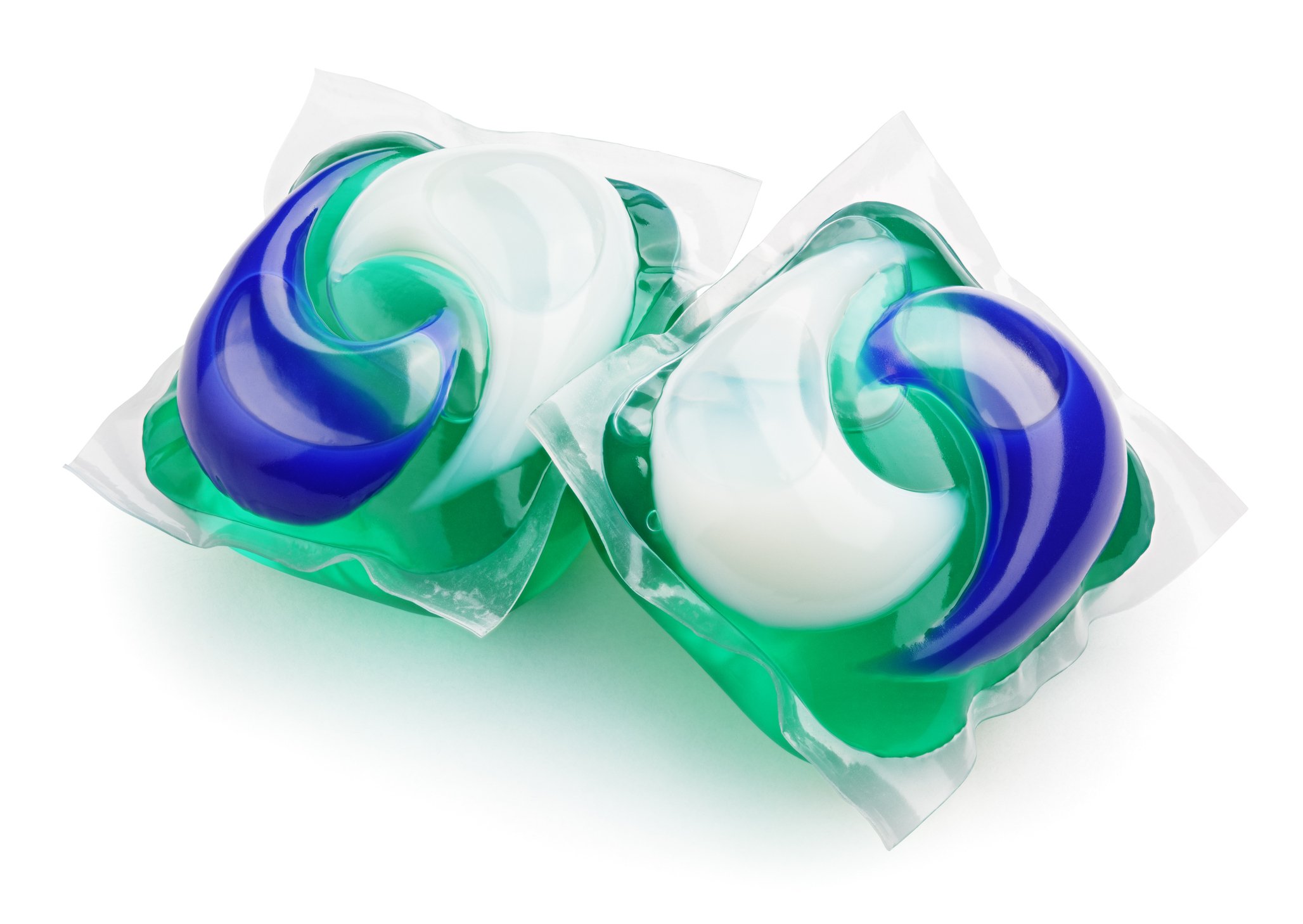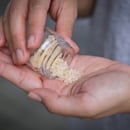
What is lurking inside that cute blue and green package? Concentrated laundry detergent!
In 2012, the Proctor and Gamble Company released a new laundry product meant to make doing laundry easier, the detergent pod. What could be better than dropping a “pod” of concentrated detergent into the washer instead of the messy measuring of liquids and powders?
Initially, between 2012 and 2017, calls to the poison centers related to pod consumption, consisted of unintentional ingestion by children under the age of 5 years who were intrigued by the bright colors, shape, and texture of the pod; a new bite-sized snack. However, instead of filling their mouths with a yummy sugary treat, these bite-sized treats caused vomiting, diarrhea, burns, and even death.
In 2015, an article titled: So Help Me God, I’m Going to Eat One of Those Multicolored Detergent Pods was published on social media. This article was possibly the first acknowledgment that people were thinking about intentionally eating a pod. Social media picked up the story and the story took on a life of its own. By this time, the number of incidences of ingested detergent pods in the younger age group was decreasing thanks to the vigilance of parents.
Sometime in December of 2017, YouTube videos were published showing people eating detergent pods, attempting to cash in on “doing the weirdest things;” not as a challenge, but as an attempt to see which video would obtain the most views.
On January 7, 2018, the first version of the Tide Pod Challenge was published, and soon many other challenge videos joined in. The intent of the original videos was to “gain views”; however, the audience of preteens and teens decided to do the challenge at home and post videos of ingesting the pods. The challenge was soon picked up by the news media as the consumers of the detergent pods were taken to emergency departments across the nation. (Quoro, 2018)
Who is at risk?
- Young children under the age of 5 years who don’t know that the pods are not candy
- Teenagers who are influenced by social media and dared from peers
- Older adults with Alzheimer’s or dementia
How Widespread is This Challenge?
2017:
- 10,500 of 12,300 estimated ingestions of detergent pods occur in children under the age of 5 years
- 167 ingestions occurred in adults older than 60 years of age
- 53 ingestions were intentional by teenagers
2018:
- 456 ingestions (intentional or unintentional) have occurred during the first month of 2018 in all age groups
- 39 ingestions by teenagers occurred in the first 15 days of 2018
(Ducharme, 2018)
Detergent Pods are Poisonous
Detergent pods contain ethanol, hydrogen peroxide, and long-chain polymers; which, burn mucous membranes. The same thin membrane is meant to release the detergent quickly into the washing machine dissolve in the mouth and release the chemicals within seconds. If the chemicals are removed from the mouth quickly, the resultant effects may only be burns to the oral mucosa; however, if swallowed, the GI tract can become burned, and severe gastrointestinal distress and respiratory arrest can occur. If not treated immediately, or if a large amount of detergent is ingested, the effect may be unconsciousness and death. The consequences of detergent pod ingestion can be severe, but the majority of the patients will have no long-term effects.
There are no protocols for treating detergents protocols; however, because of the alkaline nature of the chemicals in the detergents, treatment should include burn management. Poison Control is available at 1-800-222-1222.
Home
- Clear the mouth of any residual pod contents
If possible, rinse the mouth with water - Call Poison Control
- Drink a glass of milk
- DO NOT INDUCE VOMITING
- Go to the emergency room
Emergency Room
- DO NOT USE ACTIVATED CHARCOAL
- Irrigation of the mouth
- Intravenous steroids
- Epinephrine
- Nasogastric feedings
- Intubation and ventilation
- Bronchoscopy/esophagoscopy
(Bonney, Mazor, & Goldman, 2013)
Safeguards
Manufacturers of the detergent pods have taken steps to prevent accidental and intentional ingestion by placing ads on social media and working with various social media venues to remove harmful content from their sites .. Additionally, many pod containers now come with child safety locks and the pods have been coated with a bitter taste (Ducharme, 2018).
Despite the ease of getting the right amount of detergent for your load of clothes, detergent pods are dangerous and should be kept out of sight and out of reach of the at-risk populations. Talking with teens about peer pressure and dangerous challenges may help deter them. Poisons and challenges are part of our culture, we need to secure the safety of our children by being vigilant and protective.
References
Bonney, A., Mazor, S., & Goldman, R. (2013). Laundry detergent capsules and pediatric poisoning. Ducharme, J. (2018). Here’s how common the Tide Pod Challenge really is. < Quora. (2018). The Strange Story of How Tide Pod Eating Went Viral. Soloway, R. A. (2012). Laundry Detergent Pods and Children Keep Individual Laundry Detergent Packets Away from Children.




